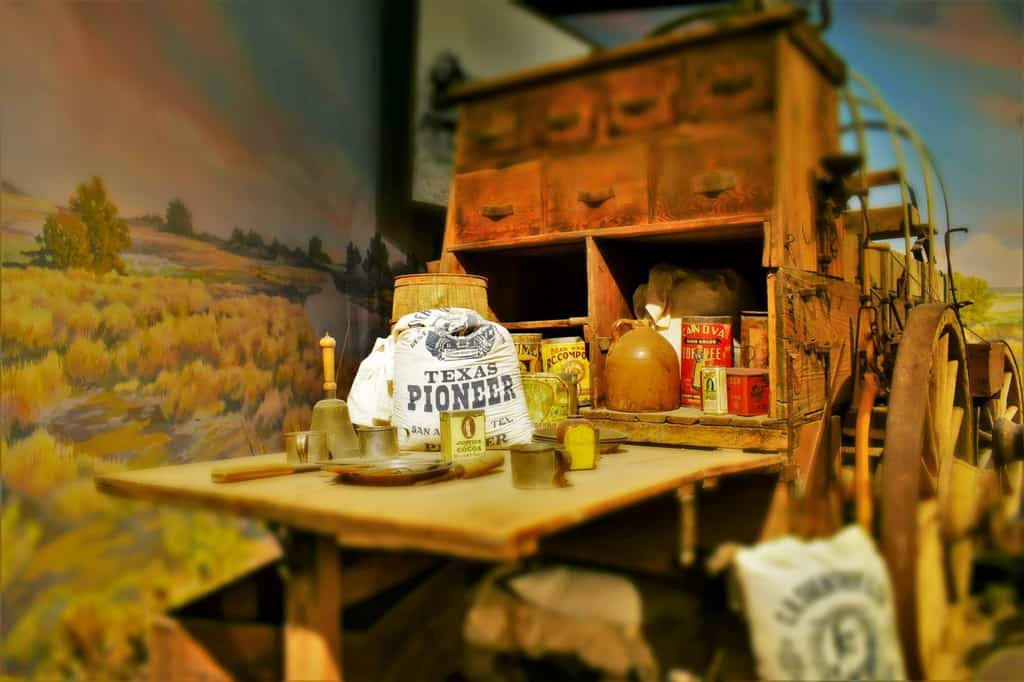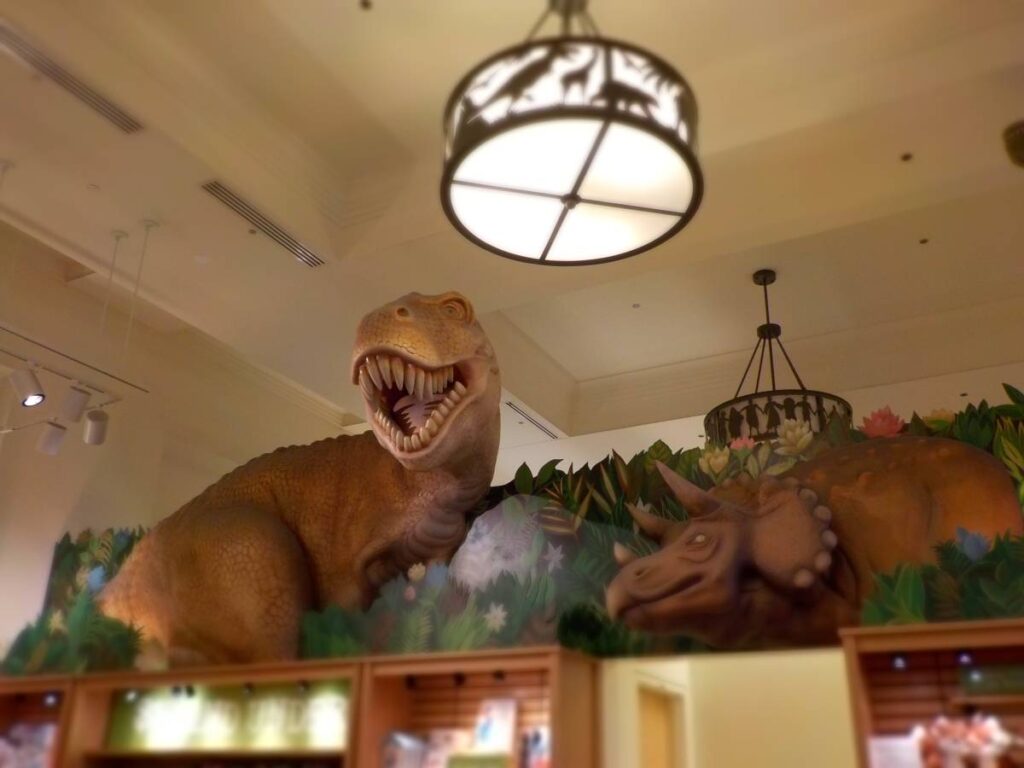This was our first visit to the southern High Plains region of Texas. With three days to explore, we planned on learning about the history of the region. The huge mesa that encompasses this portion of the high plains is actually named Llano Estacado. It is often translated as the Staked Plains. Using Amarillo as a home base, allowing for an easy excursion to the Panhandle-Plains Historical Museum, in Canyon, Texas. We always look for a chance to better understand local life. The demands that come with living in this difficult region, has challenged life in the Staked Plains for thousands of years.
We want to thank Visit Amarillo and the Panhandle-Plains Historical Museum for their hospitality. Rest assured that all opinions are our own.

Early Life in the Staked Plains
Obviously, the lands were occupied long before humans arrived. Over the eras, life in the Staked Plains has had to adapt. During a portion of time, the region was actually part of a swampy rainforest. Fossils show that many types of dinosaurs once roamed the area. We love seeing the variety of creatures, and seeing the giant phytosaur (Similar to a crocodile), is just amazing. As we followed the displays through time, we came to the period where mammals became the dominant beings. One of the exhibits shows the visible changes to the American bison over time.
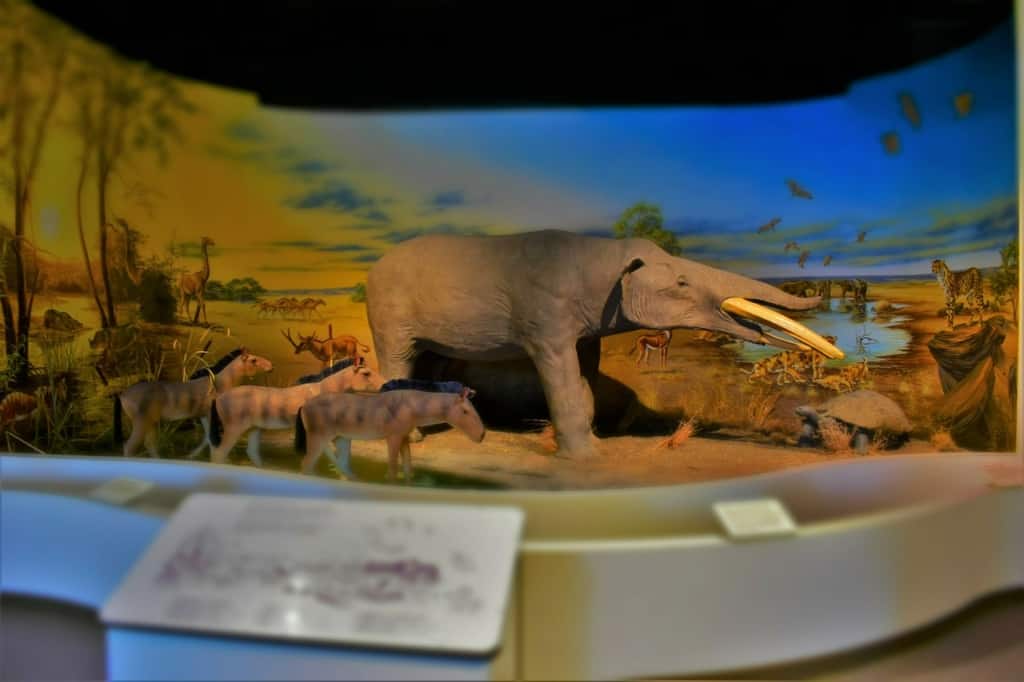
Mammals Come to the Forefront
As the sea levels continued to drop, the swamps receded. The rivers were still commonplace, so animal life in the Staked Plains flourished. Early ancestors of wild horses roamed what would eventually become the southern high plains. Over the centuries, the species changed, but their numbers still flourished. Millions of buffalo, whitetail deer, pronghorn antelope, and prairie dogs would find life in the Staked Plains to be favorable. This would be the environment that the first humans discovered when they arrived in this region.
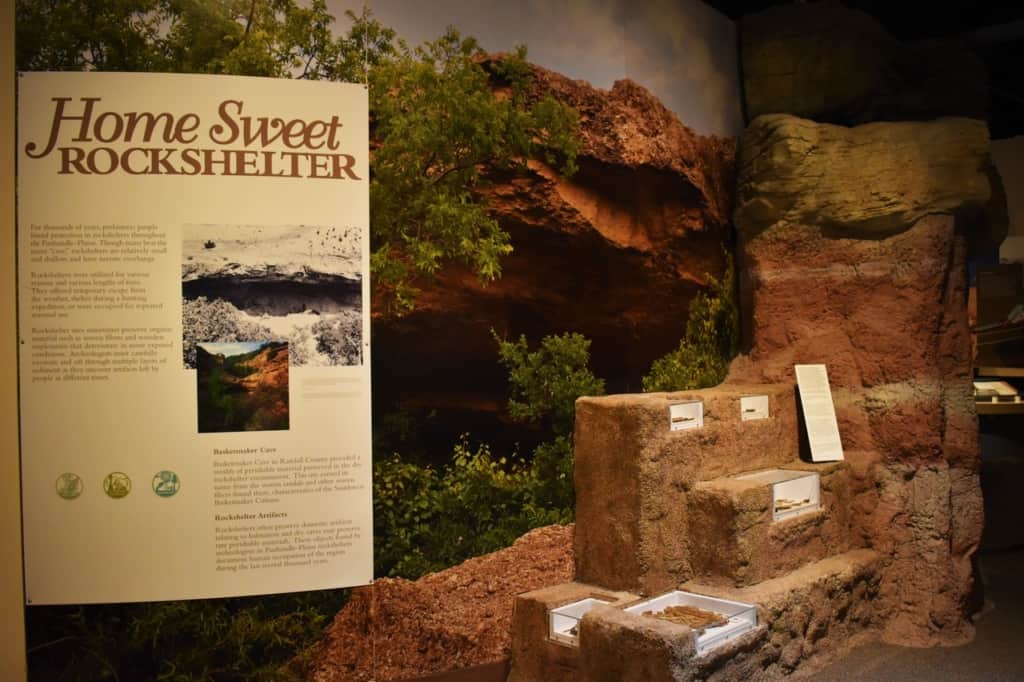
Finding Shelter
Strewn throughout the Panhandle are rock outcroppings. Many of these provide overhangs that create shelter. Not quite the scale of underground caves, they were still useful to get out of the harsh weather that would strike the region. For thousands of years, native Indians and nomads alike would utilize these spaces. Scientists are able to uncover artifacts that have been protected from the elements and shed light on these early inhabitants.

Supporting Life in the Staked Plains
With all of the wildlife, it was sure to draw a variety of hunting tribes of native Indians. During a visit to the Alibates Flint Quarries, we learned about the use of handcrafted tools by these early people. (You can read about Alibates here.) Some of these tribes decided to make the area their permanent home and faced the ever-changing weather. Archeological finds from the region tell the story of these dedicated people. A combination of hunting and farming helped support their semi-permanent villages.
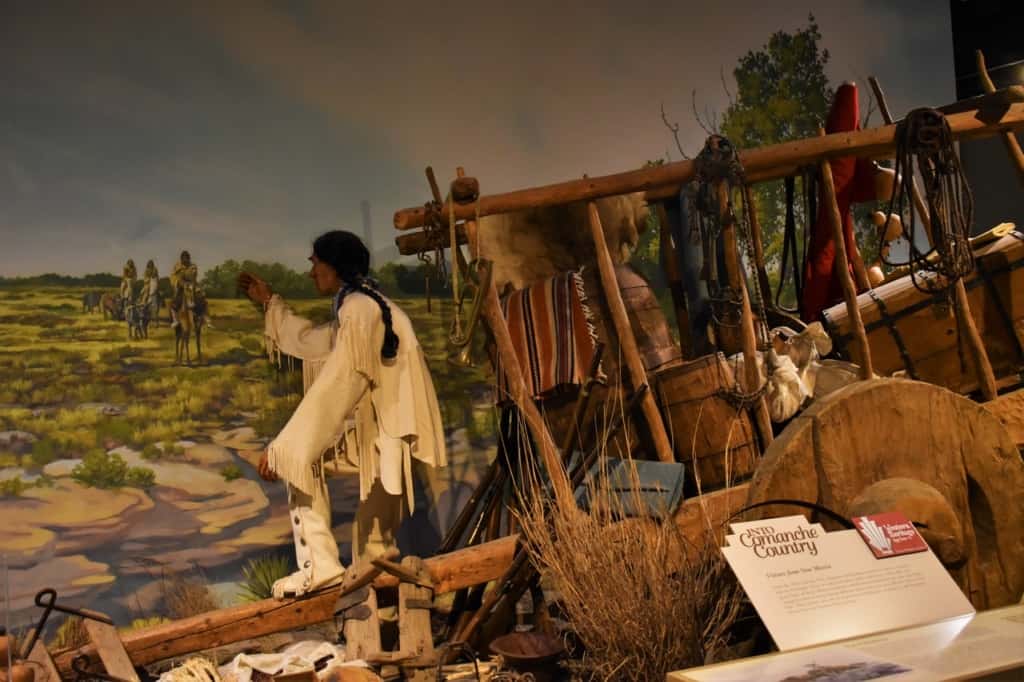
Nomadic Visitors
While some tribes took up a more permanent residence, others preferred the nomadic life. Comanches followed the buffalo herds, that frequented the region. Life on the Staked Plains meant navigating the grasslands, as well as the canyons. This includes Palo Duro Canyon, which is the second-largest canyon system in the United States. The Comanche were a fierce people who defended their hunting grounds with vigor, which continued until after the Civil War. The slaughtering of the buffalo removed their main food source leading to the downfall of the Comanche.

Changing Life in the Staked Plains
With the buffalo mostly obliterated, the grasslands were opened up for domesticated herds. The first to come were sheep, followed shortly by cattle. As more and more ranchers arrived, the sheep herds gave way to the increasing cattle stock. Soon, barbed wire fences began cordoning off sections of the Llano Estacado.

Commerce Comes to Town
When enough cowboys and ranchers had populated the region, it was sure to draw others. Many of these were business owners who looked to profit from supplying the ranch hands and owners. The railroad’s arrival would bring additional speculators, and soon families would follow. Towns sprung up with the hope of attracting a railroad depot. Commerce had come to the Staked Plains.
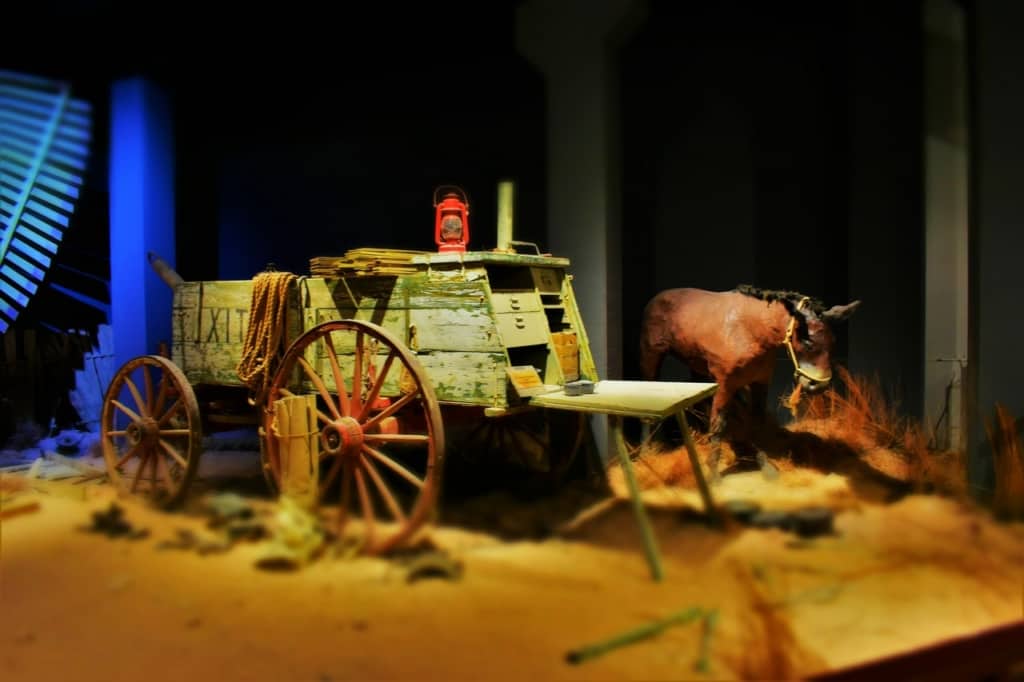
Harnessing the Wind
Life in the Staked Plains meant dealing with lots of wind. Dust devils are whipped up by the fast-moving breezes. With a nearly constant supply of free power available, the use of windmills became integral in the Texas Panhandle. We can honestly say that this was the first museum we visited that had an entire gallery filled with windmill parts. We can just imagine a worker staked out on the plains, as they assembled a windmill.

Drilling for Gold
It is estimated that there is oil or gas under two-thirds of the state of Texas. Life in the Staked Plains these days includes plenty of fields, but it hasn’t always been that way. In the early 1900s, an expedition was organized to trace the Canadian River, which flows through the Panhandle. During the exploration, it was noted that the region was favorable for rich oil fields. The report was forgotten for over a decade until it was finally used to determine the location of the first test well.
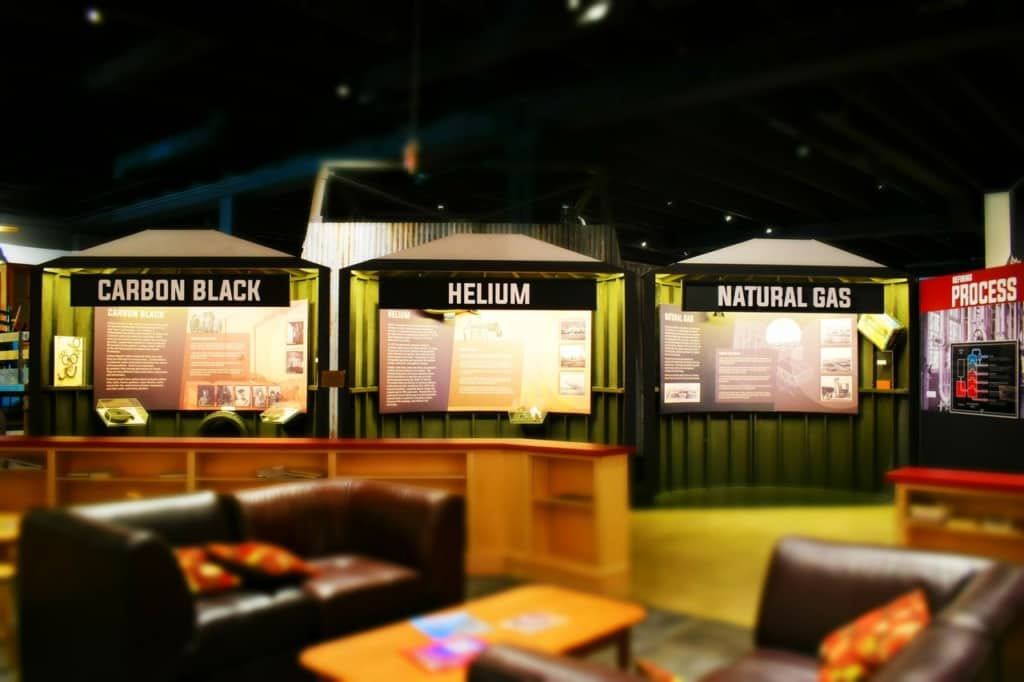
Treasures of the Staked Plains
This initial well would end up discovering one of the greatest oil and gas fields in the world. A variety of petroleum products have been mined from the formations located under the Panhandle Plains. This is just one more of the treasures that make up life in the Staked Plains. With all of this rich history, it’s easy to understand why the people who inhabit this region are so eager to show off their corner of the world. This museum is amazingly large, so plan plenty of time for your visit. (We didn’t.) They will even allow you to leave for lunch and return for more, just let them know in the gift shop.


